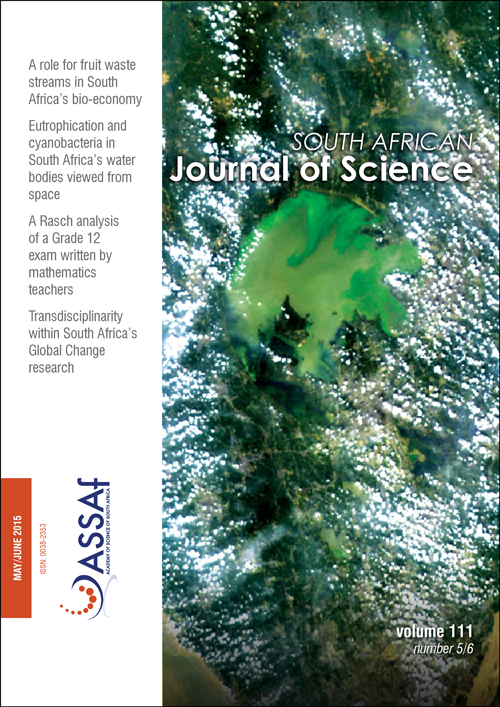Real-time measurement of outdoor worker’s exposure to solar ultraviolet radiation in Pretoria, South Africa
DOI:
https://doi.org/10.17159/sajs.2015/20140133Keywords:
skin cancer, sunburn, meteorological factors, sunprotective measures, skin phototypeAbstract
The city of Pretoria in South Africa receives considerable solar ultraviolet radiation (UVR) because of its low latitude (22–35°S) and relatively clear skies. Certain meteorological factors affect the amount of solar UVR that reaches the ground; the most dominant factors being stratospheric ozone, cloud cover and solar zenith angle. It is known that overexposure to solar UVR may lead to the development of adverse health conditions, the most significant being skin cancer. Outdoor workers spend a significant amount of time outside and are thus susceptible to this risk. In this case study, we estimated, for the first time, the realtime solar UVR exposure of an outdoor worker in Pretoria. Measurements were made on 27 and 28 May 2013 using a handheld ultraviolet index (UVI) meter calibrated against a science-grade biometer at the South African Weather Service in Pretoria. Personal exposure estimation was used to discern the pattern in diurnal and annual sunburn risk for the outdoor worker. Ambient UVR levels ranged from 0 UVI to 4.66 UVI and the outdoor worker’s potential exposure estimates regularly exceeded 80% of these levels depending on the time of day. The risk of sunburn was evident; however, actual incidents would depend on individual skin photosensitivity and melanin content, as well as sun protection used. Further research is needed to determine the personal exposure estimations of outdoor workers in other provinces in which solar UVR levels may be equally high, or higher than those in Pretoria.
Published
Issue
Section
License

All articles are published under a Creative Commons Attribution 4.0 International Licence
Copyright is retained by the authors. Readers are welcome to reproduce, share and adapt the content without permission provided the source is attributed.
Disclaimer: The publisher and editors accept no responsibility for statements made by the authors
How to Cite
- Abstract 687
- PDF 528
- EPUB 231
- XML 255












.png)